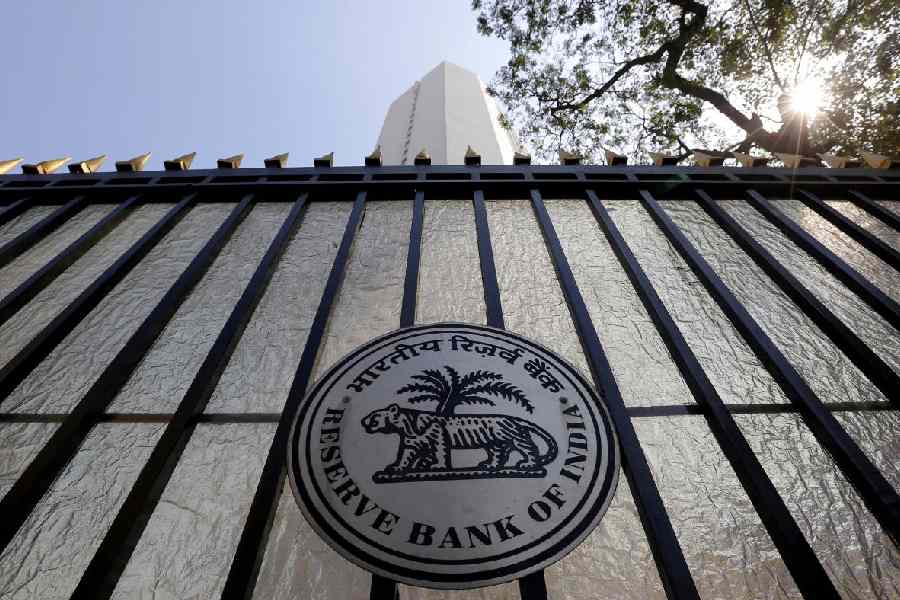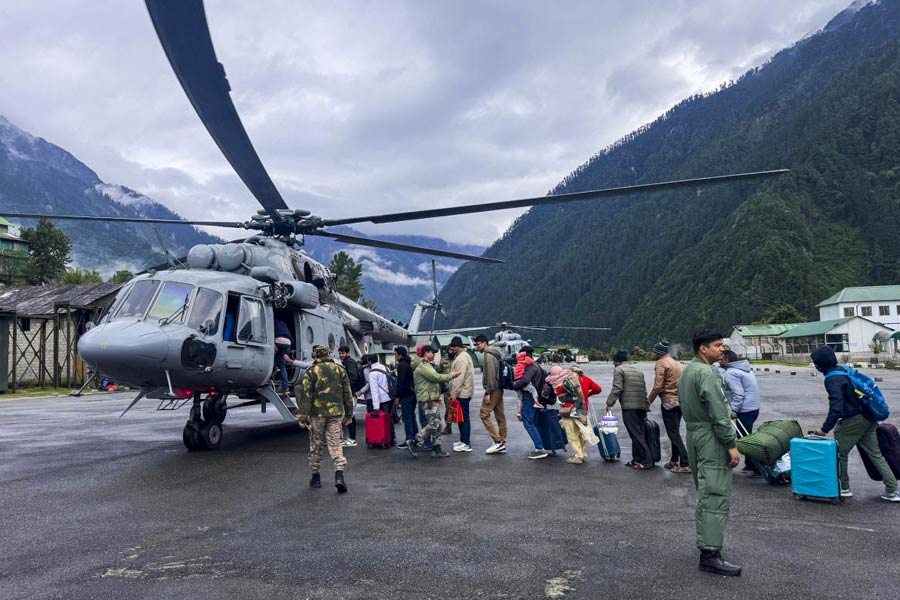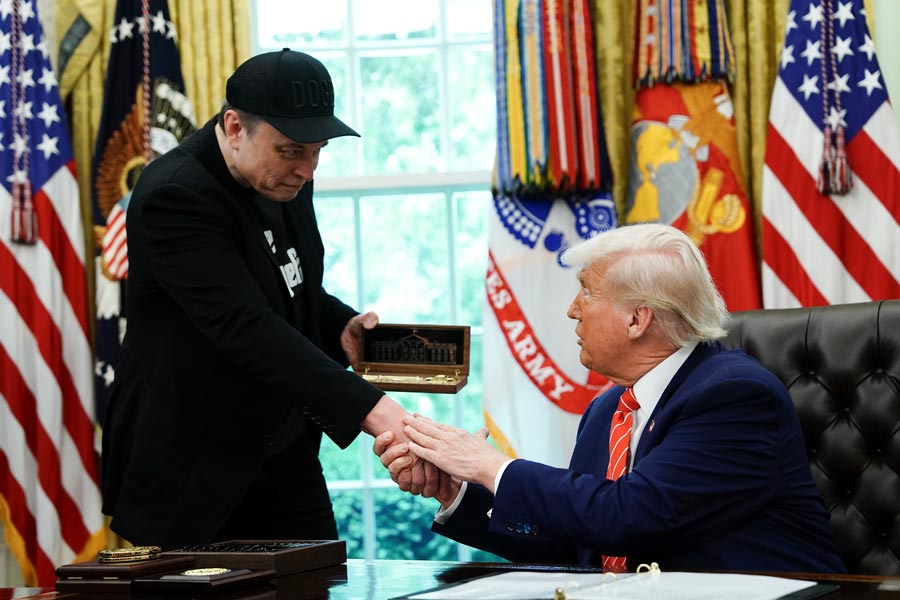
Two 19th century treaties constitute the backdrop of the contemporary situation in Jammu and Kashmir. First, the Treaty of Lahore, signed on March 9, 1846, between the British government and the Lahore State, by which Kashmir was ceded by the latter to the former. Within a week, however, in Amritsar on March 16, 1846, the second treaty between the British government and Maharaja Gulab Singh of Jammu laid out the terms thereof: "The British Government transfers and makes over forever, in independent possession, to Maharaja Gulab Singh and the heirs male of his body, all the hilly or mountainous country... situated to the eastward of the river Indus, and westward of the river Ravi... part of the territories ceded to the British Government by the Lahore State" earlier on March 9, 1846.
Thus the ownership of Kashmir changed from the hands of the State of Lahore to the British government and then to a Jammu Dogra ruler named Gulab Singh - all within an incredibly short span of one week in March 1846. The handover of the territory to Gulab Singh, nevertheless, does not seem to have been honourable owing to the unequal nature of the terms of the Treaty of Amritsar which, amongst others, stipulated: "The limits of the territories of Maharaja Gulab Singh shall not be, at any time, changed without the concurrence of the British Government" and that Gulab Singh will "abide by the decision of the British Government." It also made it compulsory for Gulab Singh "himself and heirs to join, with the whole of his military force, the British troops, when employed within the hills or in the territories adjoining his possessions." The most humiliating of all, however, were the Articles 7 and 10 of the Amritsar treaty.
Article 7: "Maharaja Gulab Singh engages never to take or retain in his service any British Subject, nor the subject of any European or American State without the consent of the British Government." How racist could the British be in 1846? After having been battered in the First Afghan War between 1839-42 by the tribal fighters in the North-West Frontier of India and winning the First Opium War against the Chinese during the same time, the British had learnt their lesson. They wanted a friend, a local puppet, as the sentinel to guard the landlocked territory that was a meeting point of people from Russia, China and India. It was a 'strategy' for the inhospitable terrain, where the spilling of non-white blood was preferable to sacrificing that of the white men.
And then there was Article 10 of the Amritsar treaty: "Maharaja Gulab Singh acknowledges the supremacy of the British Government, and will... present annually to the British Government one horse, twelve perfect shawl goats of approved breed (six male and six female) and three pairs of Kashmir shawls." All in token of "British supremacy". In a way, the British understood that given the position and terrain of Kashmir, it had to be under one of the big powers, and there was no way that it could afford to maintain either its neutrality or independence in any way. It was the same as Tibet, Manchuria and Mongolia were to China and the smaller Central Asian territories of Turkmenistan, Uzbekistan, Tajikistan, Kyrgyzstan and Kazakhstan were to the Soviet Union and now to Russia. Either the state of Jammu and Kashmir had to be a vassal state or it would vanish.
Vanish it certainly did not. After a century of rule by four Dogras, August 1947 arrived as its moment of reckoning when the British (for a change) did not give any choice to the more than 550 princely states of India but to be subservient to either of the two dominions - India or Pakistan. And this was non-negotiable. No question of independence, sovereignty or autonomy for any of them.
Every princely state now had to accede to either Delhi or Karachi and every prince had to follow the prescribed format for accession. As Jammu and Kashmir dithered and delayed, with Hari Singh toying with the idea of independence or "self-rule", an impatient Pakistan sponsored a tribal militia to invade Jammu and Kashmir, thereby compelling the ruler to sign the Instrument of Accession with the Indian State on October 26, 1947. Thus, in one stroke, while Pakistan became an 'invader' of sovereign Jammu and Kashmir (after British departure, Srinagar became independent from August 15 to October 26, 1947, when it signed the Instrument of Accession with New Delhi), India emerged as a legal invitee to take care of the territory of Jammu and Kashmir as Srinagar merged with India.
In this connection what is often ignored is that apart from the Instrument of Accession, which validates Jammu and Kashmir's merger with India, Hari Singh also had the legal sanctity of the 1939-promulgated Constitution of Jammu and Kashmir under his belt. Hence, from both sides, India's and Jammu and Kashmir's, Srinagar's accession to New Delhi was bona fide, valid, unquestionable and irrevocable.
According to the Jammu and Kashmir Constitution Act of 1939, "The territories... vested in His Highness are governed by and in the name of His Highness, and all rights, authority and jurisdiction which appertain or are incidental to the government of such territories are exercisable by His Highness..."
The Constitution of 1939 also said: "Notwithstanding anything contained in this or any other Act all powers, legislative, executive and judicial, in relation to the State and its government are hereby declared to be and to have always been inherent in and possessed and retained by His Highness." Endowed with this power of the monarch, duly endorsed and sanctified by the Jammu and Kashmir Constitution Act, 1939, Hari Singh's accession to the Indian dominion gets a two-way approval and legitimacy from Indian as well as Jammu and Kashmir law.
This point has often been either overlooked or ignored or is not given its due importance by the critics of India. It needs to be remembered that following the Pakistani invasion of the sovereign state of Jammu and Kashmir on October 22, 1947, four days before the state acceded to India, the latter had not yet become a republic. India's Constitution came into effect only in January, 1950. But one must appreciate the fact that the members of the Constituent Assembly, who were then giving shape to the future Constitution of India, fully understood the gravity of the situation and beautifully crafted the opening Article 1 of the Constitution.
Article 1 of the Constitution says, "(1) India, that is Bharat, shall be a Union of States" and that "(3) The territory of India shall comprise - (a) the territories of the States; (b) the Union territories specified in the First Schedule; and (c) such other territories as may be acquired." This constituted the boldest reversal of the trend that was in place for thousands of years of Indian history. It gave a message to the world that India can "acquire territories", a privilege thus far enjoyed by the foreign invaders and foreigners at the expense of Indians. The makers of Indian Constitution simply left no room for the secession of territory and the apex court also upheld that there could be "adjustment" of boundary or territory on the basis of "give and take".
The irony of Jammu and Kashmir is that everything exists in black and white. Yet there are efforts to destroy the rule of law. The sheer lack of knowledge and deliberate avoidance of the truth are complicating matters. Jammu and Kashmir is a legitimate part of India and no rabble-rousing demagogue can alter this reality. New Delhi is tied to Srinagar by irrevocable ties.











